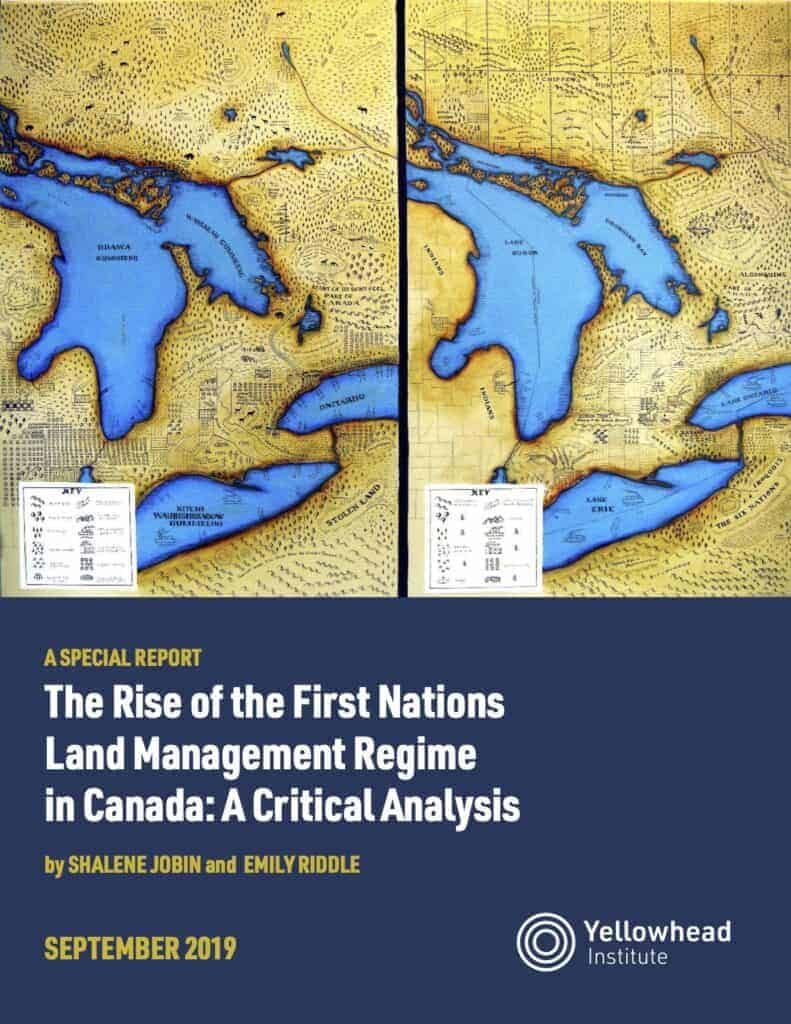- About
- Research
-
-
- Special Reports & Features
- Braiding Accountability: A Ten-Year Review of the TRC’s Healthcare Calls to Action
- Buried Burdens: The True Costs of Liquified Natural Gas (LNG) Ownership
- Pretendians and Publications: The Problem and Solutions to Redface Research
- Pinasunniq: Reflections on a Northern Indigenous Economy
- From Risk to Resilience: Indigenous Alternatives to Climate Risk Assessment in Canada
- Twenty-Five Years of Gladue: Indigenous ‘Over-Incarceration’ & the Failure of the Criminal Justice System on the Grand River
- Calls to Action Accountability: A 2023 Status Update on Reconciliation
- View all reports.
- Special Reports & Features
-
-
- Yellowhead School
-
- The Treaty Map
- LIBRARY
- Submissions
- Donate
Federal Budget 2018 contains significant investments in the First Nations Land Management regime.
In December 2018, the First Nations Land Management Act was also amended, lowering the voting threshold for ratification and offering First Nations increased flexibility in investing or spending funds generated under the First Nations Land Management Act.
As Canada moves towards a strategy of sectoral self-governance—slowly deconstructing the Indian Act rather than negotiating all-encompassing self-governance agreements—the management of reserve lands is becoming a critical component of this model and a supposed means for First Nations to ‘catch up’ to the speed of business and build prosperity for their communities.
Though the Land Code may provide First Nations with some increased jurisdiction over reserve lands, it does not fundamentally challenge the allocation of land beyond reserves (territory). Also, by opening up reserve lands to the market, it may further contribute to the dispossession of land for First Nations people.
KEY QUESTIONS
What are the benefits of the FNLMA regime and the threats? How are communities transformed through the land code process? Does FNLMA represent a substantive form of self-determination?
RELATED RESOURCES
FACTSHEET
An Overview of the First Nations Land Management Regime
This factsheet provides a one-page overview of the First Nations Land Management Regime, and includes a description of the four legal documents involved in the Regime: The Framework Agreement; the First Nations Land Management Act; a Land Code; and the Individual Agreement.
FACTSHEET
First Nations Land Management Regime: Pros and Cons
This factsheet outlines seven pros and five cons of the First Nations Land Management Regime.
For those First Nations which align to the government of Canada’s developed economic criteria, there are economic benefits, increased efficiencies, and the potential for new job creation on reserve. There are also: the increased burden of having to deal with the aftermath of legacy issues of the Indian Act system, increased cost and efforts to develop laws and policies, and the negation of fiduciary responsibility of the Crown.
- shalene jobin & emily riddle
AUTHOR

Shalene Jobin
Cree and Métis, Red Pheasant Cree First Nation, Treaty Six
AUTHOR

Emily Riddle
Cree and Métis, Red Pheasant Cree First Nation, Treaty Six
ARTIST

Christi Belcourt
Métis
Good Land (used with permission)

